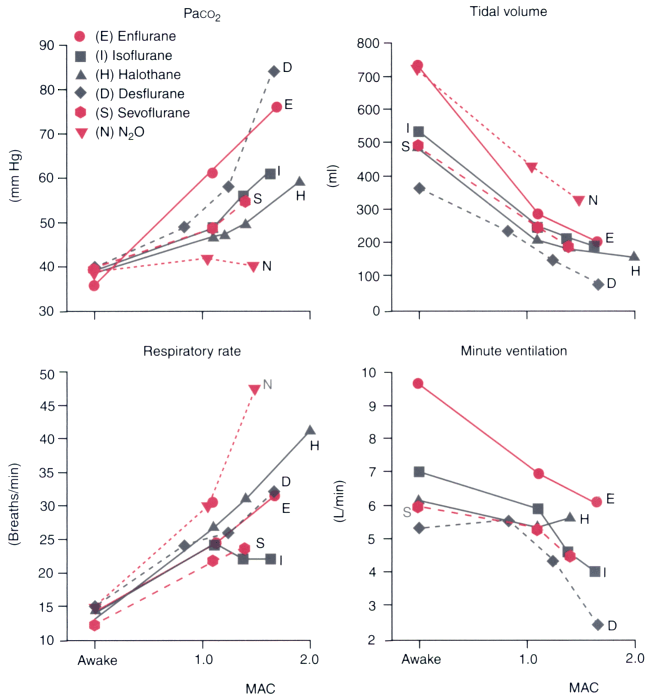Figure 6-13
Comparison of mean changes in resting PaCO2
,
tidal volume, respiratory rate, and minute ventilation in patients anesthetized with
halothane (H), isoflurane (I), enflurane (E), sevoflurane (S), desflurane (D), or
nitrous oxide (N). Anesthetic-induced tachypnea compensates in part for the ventilatory
depression caused by all volatile anesthetics (i.e., decreased minute ventilation
and tidal volume and concomitant increased PaCO2
).
Desflurane results in the greatest increase in PaCO2
,
with corresponding reductions in tidal volume and minute ventilation. Isoflurane,
like all other inhaled agents, increases respiratory rate, but isoflurane does not
result in dose-dependent tachypnea. (Data from references [224]
[225]
[226]
[227]
[231]
[232]
.)

